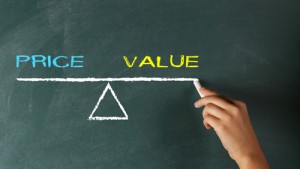What is Intrinsic Value?

What does intrinsic mean?
The definition of intrinsic is really just another word for ‘inherent.’ In order to define intrinsic, it is important to pay attention to the other types of values that an item or an asset can have. The intrinsic value of an item is distinct from its market value or its extrinsic value, which is important to consider for people who want to define intrinsically. This article is going to cover many of the fundamental differences between an item or an asset’s extrinsic value and its intrinsic value, especially in juxtaposition to the item or asset’s market value.
How to define extrinsic value?
The extrinsic value of any item is based entirely on factors that are external to the item. The intrinsic value definition of something is very much distinct from its extrinsic value, although in order to define extrinsic, it makes sense to define them both. The extrinsic value is also distinct from the market value of something, although they would seem to relate to one another philosophically speaking.
Assessing Market Value
Assessing the market value of any asset can be difficult, especially since the intrinsic value of an asset may not perfectly match the market value that it has acquired at present. The market value of any asset will fluctuate, but its intrinsic value may be based on something that is going to persist and last through several different changes in its market value. It is also important to take the extrinsic value of anything into account.
What is one way to calculate the extrinsic or intrinsic value of something?
Both the extrinsic and intrinsic value of something can be subtracted from the premium price of that item. When people subtract the intrinsic value of something from the premium price, they will get the extrinsic value. Similarly, subtracting the extrinsic value of something from the premium price yields the intrinsic value.
How can people define intrinsic value in specific circumstances?
It is often important to think of the factors that never really do change when assessing the intrinsic value of an item. When it comes to subjects like real estate, it is often easy to conceptualize an item’s intrinsic value. A house is very much a solid asset as opposed to a theoretical one. The size of a given house is a component of its intrinsic value. Learning what does intrinsic mean is often a matter of thinking about the specific characteristics of something instead of the characteristics that people project onto it.
What are some examples of an item’s extrinsic value?
The extrinsic value of a given item is often something that can change in a fairly fickle manner. Real estate agents are constantly having to deal with the manner in which an item’s extrinsic value can fluctuate, for instance. A given house may have a higher extrinsic value for a given customer because it is located in his or her favorite city, for instance. That same house may have a comparatively low extrinsic value for someone who doesn’t like this particular city. Changes in the extrinsic value of something can be difficult to predict.
How is the intrinsic value of an item established?
The intrinsic value of solid, tangible assets like houses is often easier to establish, because they have defined characteristics that are not going to change in most cases. In some cases, the intrinsic value of an item must be assessed using many different analytical tools. When it comes to securities and other sorts of financial assets, an item’s intrinsic value can be somewhat challenging to establish.
In many cases, investment experts are simply going to need to estimate the intrinsic value of any security or investment. Separating the intrinsic value of an investment or security from the market value can be somewhat difficult, but experts have been able to do it time and time again to a certain extent.
The challenges involving assessing an item’s intrinsic value can help to underscore how complicated finance can be at the best of times. Even the concept of something’s intrinsic value can bring up philosophical questions. Obviously, all value is technically projected onto something by humans, and all value is a matter of opinion. However, there are patterns in what people tend to perceive as valuable, and there are characteristics of an item’s value that never seem to change. People can determine an item’s intrinsic value that way, even if the definition of intrinsic seems subjective.
 Follow
Follow
